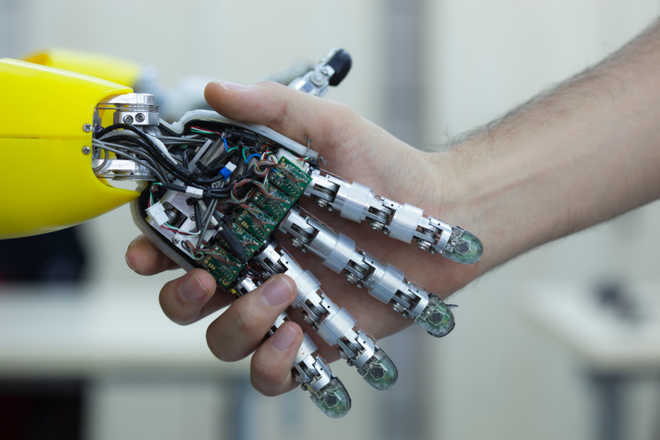
Photo for representation only. — Thinkstock.
WASHINGTON
Latest images from NASA's Mars InSight lander—which successfully touched down on the Red Planet last week—show its robotic arm is ready to do some lifting, the US space agency said.
With a reach of nearly two metres, the arm will be used to pick up science instruments from the lander's deck, gently setting them on the Martian surface at Elysium Planitia, the lava plain where InSight touched down on November 26, NASA said in a statement.
The arm will first use its Instrument Deployment Camera, located on its elbow, to take photos of the terrain in front of the lander, it said.
These images will help mission team members determine where to set InSight's seismometer and heat flow probe—the only instruments ever to be robotically placed on the surface of another planet.
"Today we can see the first glimpses of our workspace," said Bruce Banerdt, the mission's principal investigator at NASA's Jet Propulsion Laboratory (JPL) in Pasadena, California.
"By early next week, we'll be imaging it in finer detail and creating a full mosaic," Banerdt said.
Another camera, called the Instrument Context Camera, is located under the lander's deck. It will also offer views of the workspace, though the view won't be as pretty.
"We had a protective cover on the Instrument Context Camera, but somehow dust still managed to get onto the lens," said Tom Hoffman of JPL, InSight's project manager.
"While this is unfortunate, it will not affect the role of the camera, which is to take images of the area in front of the lander where our instruments will eventually be placed," Hoffman said.
Placement is critical, and the team is proceeding with caution. Two to three months could go by before the instruments have been situated and calibrated, NASA said.
Over the past week and a half, mission engineers have been testing those instruments and spacecraft systems, ensuring they are in working order.
A couple of instruments are even recording data: a drop in air pressure, possibly caused by a passing dust devil, was detected by the pressure sensor.
This, along with a magnetometer and a set of wind and temperature sensors, are part of a package called the Auxiliary Payload Sensor Subsystem, which will collect meteorological data. — PTI



























